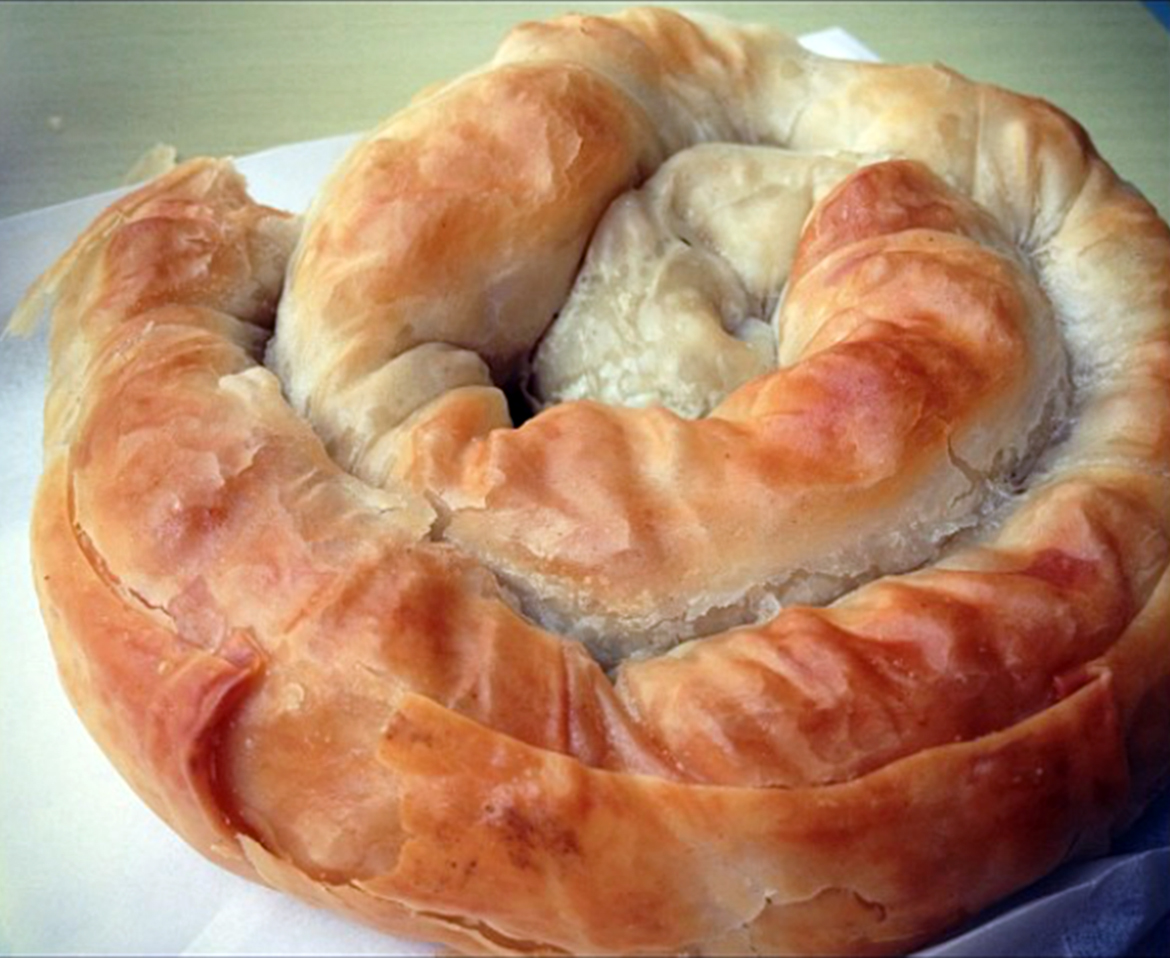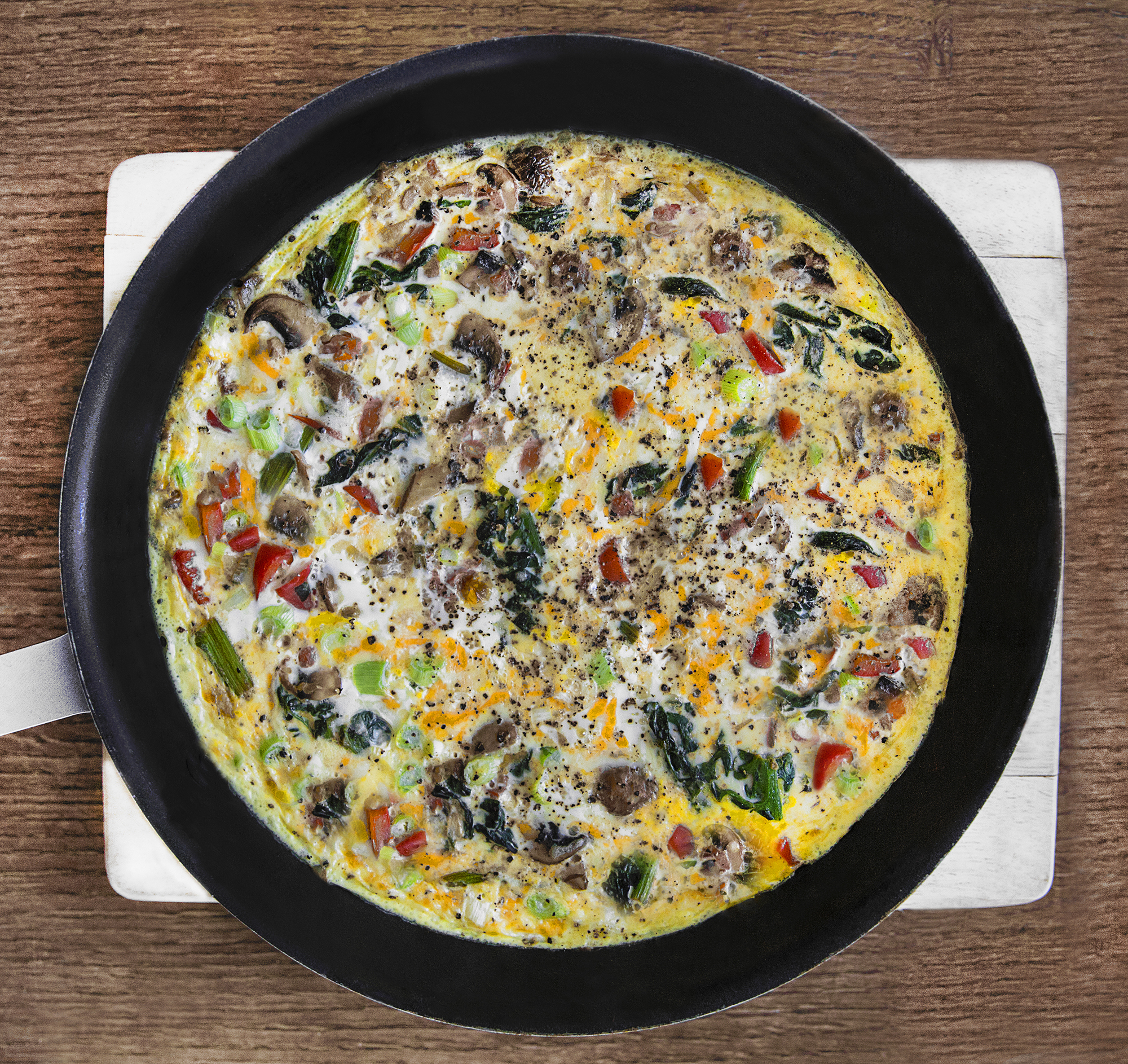Pita, a Greek national dish made throughout the mainland in Greece, is a flat, flaky pastry pie with a number of different fillings such as ground meat or pork, leek, cheese, spinach, or even sweet fillings such as apple. Pita is a staple home cooked food of Greece. Greek families with a sense of tradition have a background of making their own great homemade pita. The captivating thing about pita is the imagination that the fillings can inspire because there is nothing that would not taste even better when baked in the buttery, paper-thin flaky pastry. Pita is made a number of different ways and the main differences of the kinds of pita lie in the taste of the dough and in the number of pastry sheets that puff up in the oven, giving pita its characteristic crispiness.
 I learned how to make pita from my Yiayia (my grandmother) when I was a kid. I would watch her for hours as she would knead the dough and prepare it her own special way with one of five fillings – ground meat and onion, pumpkin, praso pita (leek and cottage cheese), feta and cottage cheese or my personal favourite, spinach and cottage cheese. My Yiayia would make two to three large pitas at a time. Her dough recipe consisted of flour, yeast and sugar, vegetable oil, egg, salt, water, and butter and I remember she would have all the ingredients on the table and let me stand on a stool next to her. She would knead her individual portions of dough before rolling them out with a thin rolling pin turning them and rolling them out again until the whole table was covered with a paper-thin layer of pastry. That layer was folded together and the rolling process would start all over again. I would watch her as she patiently rolled out seven thin layers of the dough, covering the filling with the layers one by one in one of her big, deep silver pans and then it’d be ready to go into the oven!
I learned how to make pita from my Yiayia (my grandmother) when I was a kid. I would watch her for hours as she would knead the dough and prepare it her own special way with one of five fillings – ground meat and onion, pumpkin, praso pita (leek and cottage cheese), feta and cottage cheese or my personal favourite, spinach and cottage cheese. My Yiayia would make two to three large pitas at a time. Her dough recipe consisted of flour, yeast and sugar, vegetable oil, egg, salt, water, and butter and I remember she would have all the ingredients on the table and let me stand on a stool next to her. She would knead her individual portions of dough before rolling them out with a thin rolling pin turning them and rolling them out again until the whole table was covered with a paper-thin layer of pastry. That layer was folded together and the rolling process would start all over again. I would watch her as she patiently rolled out seven thin layers of the dough, covering the filling with the layers one by one in one of her big, deep silver pans and then it’d be ready to go into the oven!
Making pita involves a great deal of work, which is why nowadays my family only makes pita the authentic way for special occasions. In particularly a pita or two is always prepared by my father and mother for new years day as in Greek tradition it is accustom to hide coins in numerous prepared pitas, giving it’s finder good luck and prosperity for the coming year.
A more common way I get my fill of pita in Toronto on a regular basis is by picking up a pita (more commonly called a spanakopita in Toronto) that is made with phyllo pastry. They are easy to find if you are at a Greek bakery or restaurant and much easier to make at home than the real thing. The two staple fillings of spanakopita made with phyllo that you commonly find are cheese or spinach and feta. The difference is the spanakopita is created with store bought Phyllo pastry and the texture is quite different that that of the dough made the traditional Greek way. Phyllo, which translates to English as “leaf”, got its name because its leaf like delicacy is similar to a puff pastry but not quite the same. Whereas a puff pastry contains eggs and has individual layers separated by cold butter, a phyllo pastry has leaf thin layers that don’t include eggs and are separated with oil sometimes instead of butter. While it’s not the same thing as my grandmothers recipe but I still love to pick a up a spanakopita from time to time anywhere I can get my hands on one and taste the thin, oily layers that melt in my mouth and make me feel like I am at home.
My Yiayia’s Spinach and Cottage Cheese Pita
For the Pita Dough:
12 cups of flour
1/2 tsp yeast
1 tsp of sugar
1/4-cup salt
water
1/2-cup Greek extra virgin olive oil
1 egg
melted butter (for brushing)For the Filling:
3 packages of Spinach
1 package (500gr) of Cottage Cheese
2 Eggs
2 tbls Milk
Salt and Pepper
Method:
- Put yeast, sugar and salt in a small bowl and fill it with lukewarm water until the mixture is covered in water. Cover the bowl and put in a warm place to rise for 10 minutes
- Put flour in a large mixing bowl and make a well. Add the salt, olive oil, egg, and yeast mixture. Add water slowly and knead with your hands in the bowl until dough forms
- Put dough onto a floured surface and knead for 15 minutes. When ready, transfer back to the bowl, cover with plastic wrap and set it aside to rest for 30 minutes
- To make the filling boil the spinach 5 minutes and then drain well
- Put spinach back into the pot and add cottage cheese, eggs, and salt and pepper. Mix well adding milk to thin
- Preheat oven to 350 degrees
- When the dough is ready transfer to your working surface and roll into a snake shape. Cut into 7 equal parts.
- Sprinkle some flour on your working surface and start to roll out the first of the 7 pieces of dough. You want it to become as thin as possible.
- Place the first in a buttered pan, brush with butter
- Roll out the second, third and fourth pieces of dough as thin as possible continuing the same process of placing each sheet in the pan and brushing each sheet with butter
- Add the filling spreading it evenly on the dough in the pan
- Roll out the fifth and sixth pieces of dough as thin as possible continuing the same process of placing each sheet in the pan and brushing each sheet with butter
- Gently lay the seventh piece of dough over the pan and turn the edges over with your fingers, gently tucking them in all the way around to form a crust
- Score the surface with a sharp knife and brush with butter
- Cook in the oven for the 30 minutes then lower heat to 250 degrees and cook an additional 3o minutes


